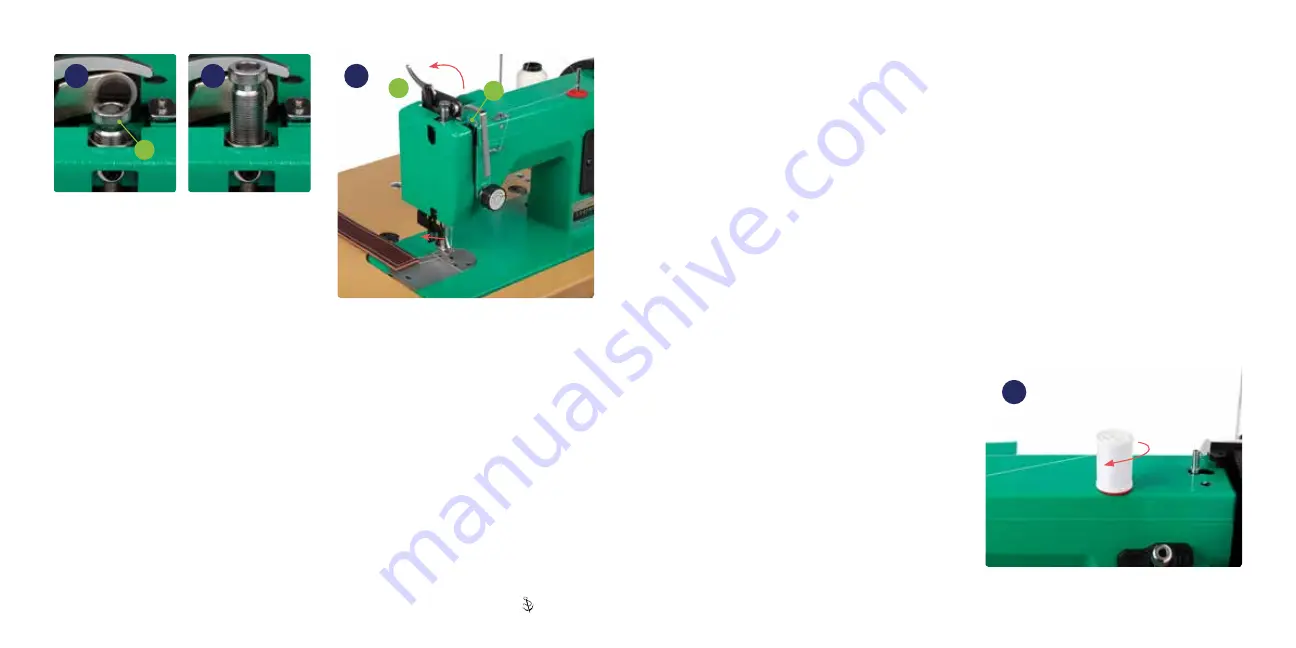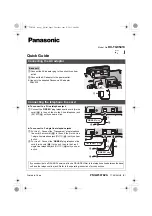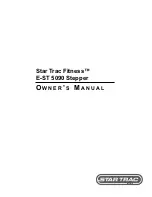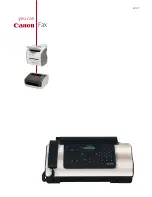
21 |
Sailrite�com
Leatherwork
®
Guidebook
| 22
1� Use an appropriate thread�
Home sewing machine thread should be
used in clothing or general home sewing�
Nylon thread is often preferred for interior
upholstery� Polyester is used for outdoor
applications and rugged bag work�
2� Select an appropriately sized needle�
Match the thread weight to the needle size (p�
6)� New machines ship with a 135x16 #20 DI
needle installed�
3� Adjust pressure on the foot�
Too much pressure when sewing lighter
fabrics can scuff the material� Too little will
prevent the machine from feeding properly�
See “Adjusting Presser Foot Tension” (p� 21)�
4� Ensure proper thread tension�
Knots should be centered in fabric (no more
visible on the top of the sewn application
than on the bottom)� See “Thread Tension
Adjustment” (p� 19)�
5� If using small spool of thread, check for
clockwise rotation of the thread spool�
When placing home sewing machine spools
on the thread post (
29
), be sure the thread
spool is turning in a clockwise manner to
ensure the post it rides on is tightened, not
loosened�
Removing Material From
Under the Presser Foot
1� Stop the machine with the take-up arm (
B
)
at its uppermost position�
2� Raise the feet with the lift lever (
C
)�
3� Pull the material straight back to remove it
from under the foot (
28
)� It may be helpful
to rock the balance wheel forward and back
to free the thread�
4� Cut the two threads to free the material,
leaving at least an 8-inch length of thread
coming out of the machine�
More than two threads? See p� 36�
28
26
27
Adjusting Presser Foot Tension
The amount of downward pressure put on the
material by the presser foot is controlled by the
Pressure Regulating Thumbscrew (
A
)� This screw
compresses a long coil spring above the presser
foot� Turn the screw clockwise to increase the
downward foot pressure (
26
)� Turn the screw
counterclockwise to decrease the foot pressure (
27
)�
When sewing a thick leather assembly, set the
regulating thumbscrew to be very loose� To do
this, turn the thumbscrew until it comes free of the
machine and then rethread it about three complete
rotations� Even with this setting, downward foot
pressure is significant because the thickness of
the material will raise the feet higher than normal,
creating substantial spring compression�
The sewn assembly may be so dense that the
needle’s extraction overcomes the presser foot’s
downward force� If this is the case, you may notice
the assembly popping up and down while being
sewn and you may be skipping stitches. To fix this,
you will need to increase the pressure by screwing
the thumbscrew down further�
C
B
Sewing Fabric
Several of the same characteristics that make the Leatherwork great for leather also make the machine
perfect for upholstery fabrics, canvaswork and most home fabrics� However, as a heavy-duty machine,
the Leatherwork is not ideal for sewing very light and delicate fabrics like silk, light sheers or chiffon�
Use this simple checklist before sewing fabrics:
A
29
Summary of Contents for Leatherwork
Page 1: ......














































